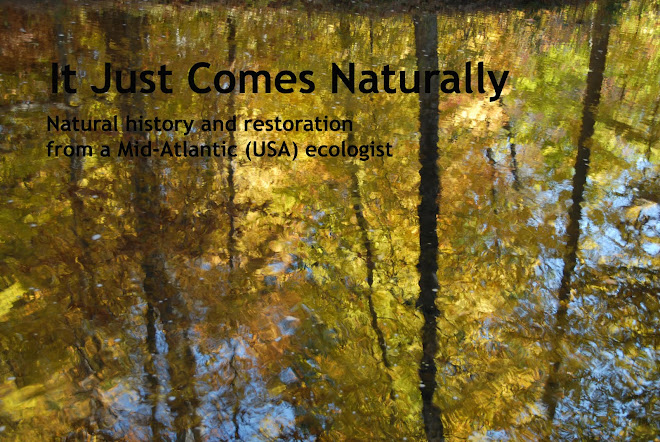The forest is not the most dramatic or beautiful woods in my preserve. Most of it was farmland until about 1920, but a new owner abandoned agriculture and allowed the woods to return. The canopy is still young and not very diverse--mostly quick colonizing and rapidly growing tuliptrees and ashes (which, alas, are now under attack by the devastating emerald ash borer beetle, imported from China). Nevertheless, it is the woodland I've come to know the best in my preserve.
And I've come to know its birds, too, especially the Ovenbirds. Ovenbirds are aberrant warblers that look more like small thrushes. They skulk around furtively in the duff and the low understory, defending their territory with their distinctive and increasingly strident tripartite teacher-TEACHER-TEACHER call. The birds are much more often heard than seen, but since I spend so much time in the woods with them, I'm bound to observe one or two each spring.
The Ovenbirds and their offspring are remarkably faithful to territories. I could probably outline the birds' territories each spring without even venturing into the woods - which is what distressed me when I learned that a part of the woods I've come to know so intimately was for sale. I originally included this five-acre woods in my census area because it was owned by an individual who I thought would never sell it for development. I was proved wrong in 2016, though, when the owner announced plans to sell the land for housing. The land included the territory of an Ovenbird (or its offspring) that I had documented from my very first census in 1991.
 |
Fortunately, the landowner was willing to work with my organization to try to protect the land permanently. The landowner delayed a sale until my organization could work with the state to secure open space funding.
When the landowner finally sold the land to my organization on Tuesday afternoon, February 21, I practically leapt for joy knowing that one Ovenbird pair evermore would have a place to raise its brood.




